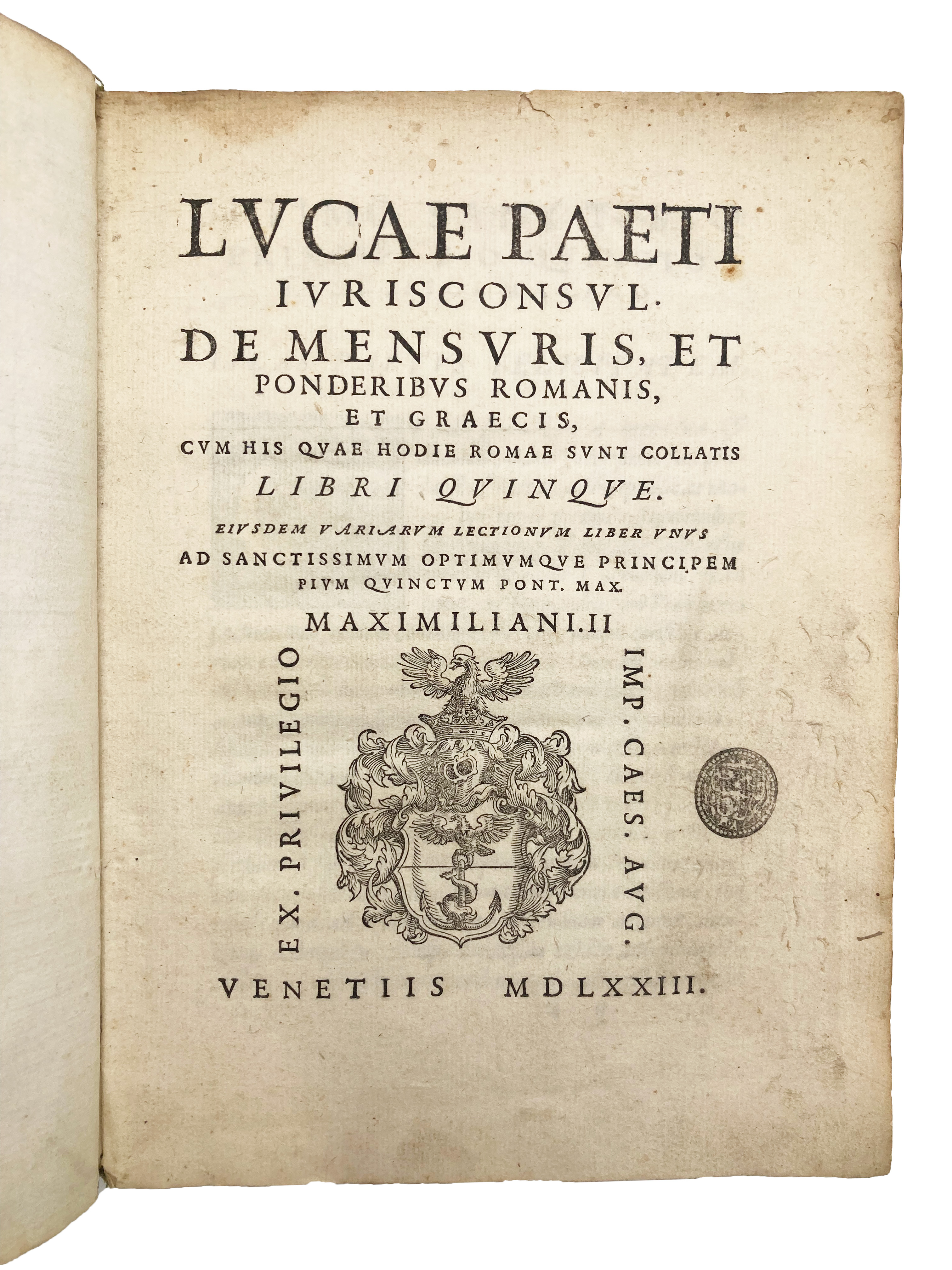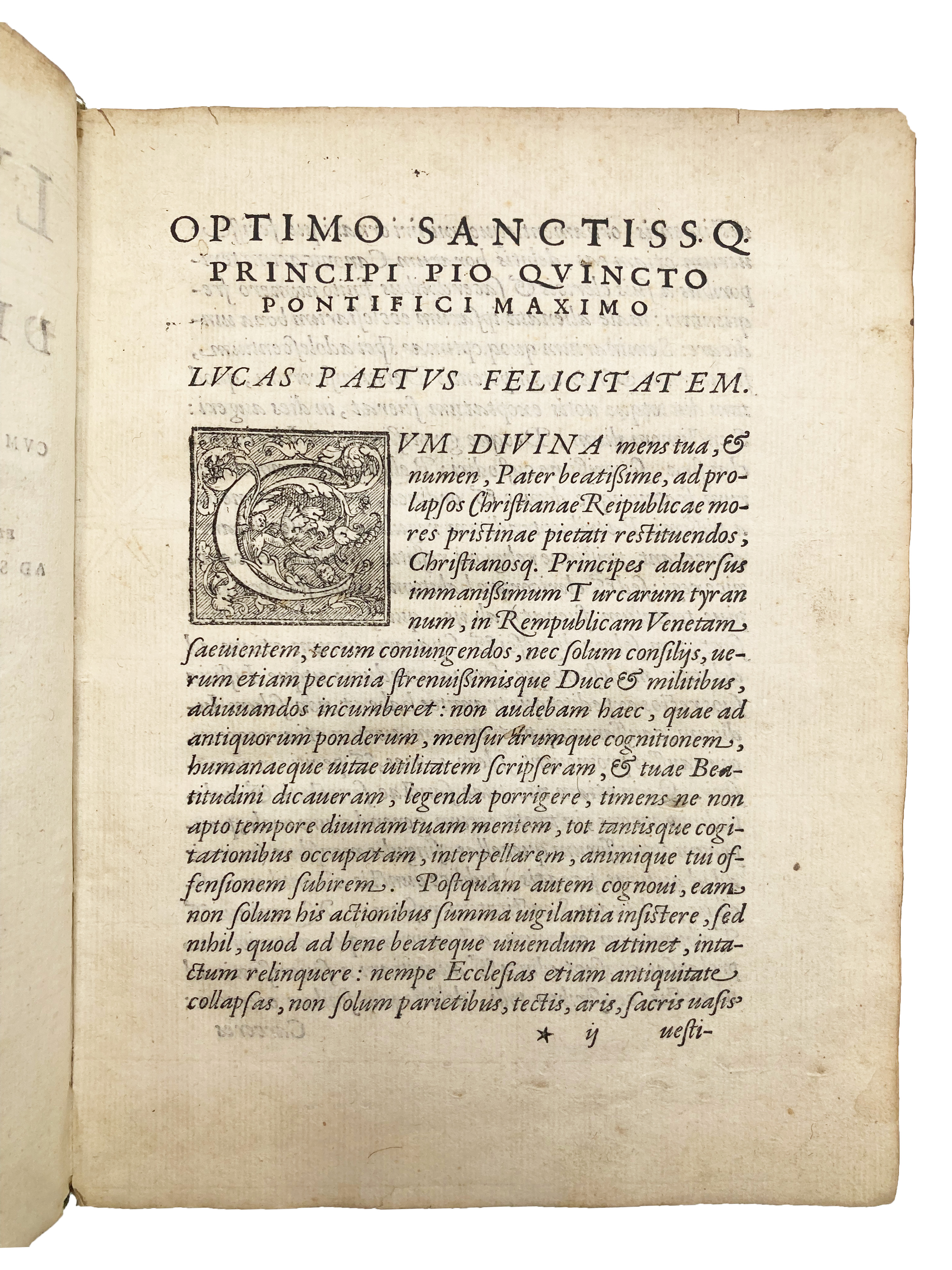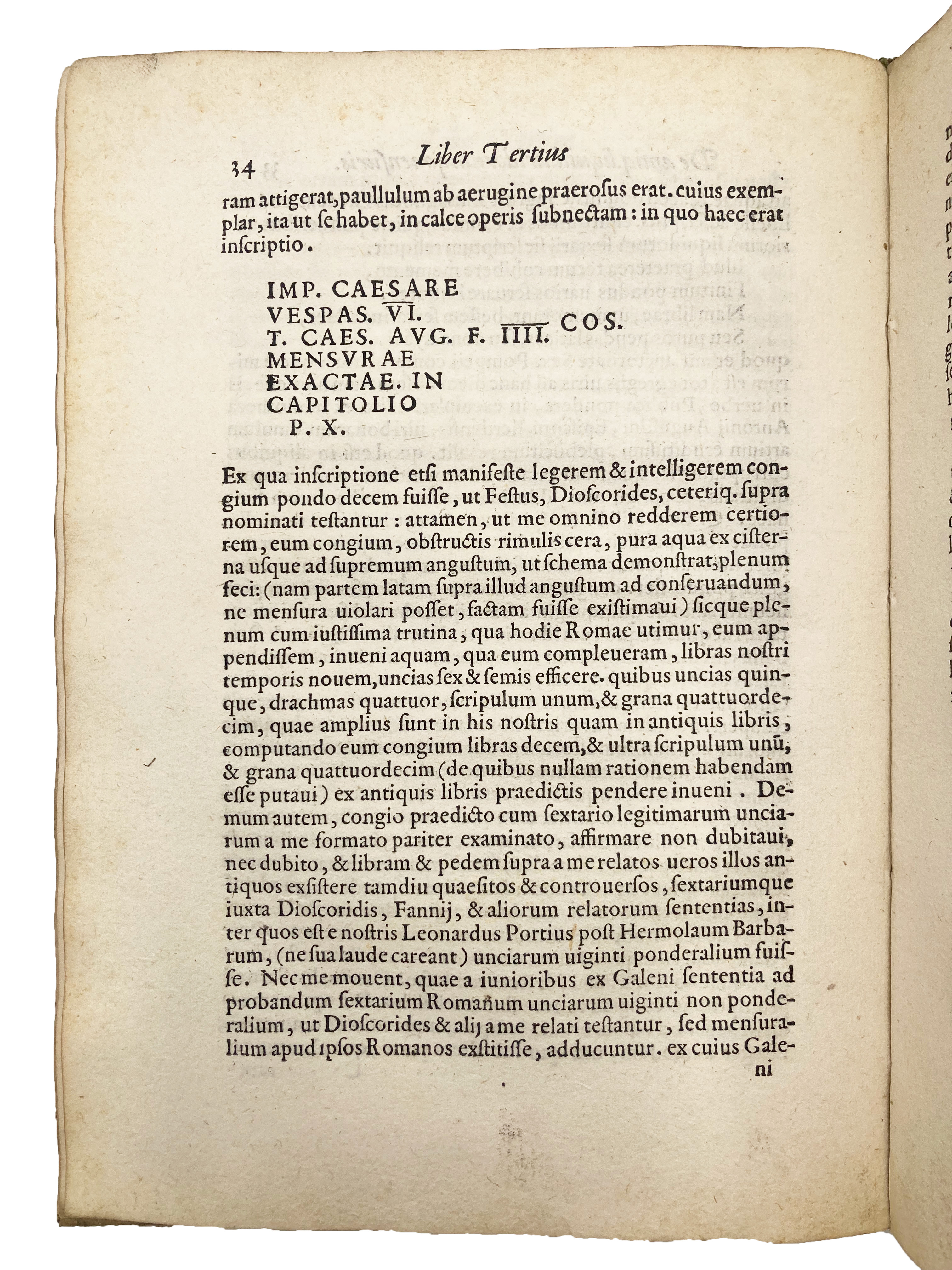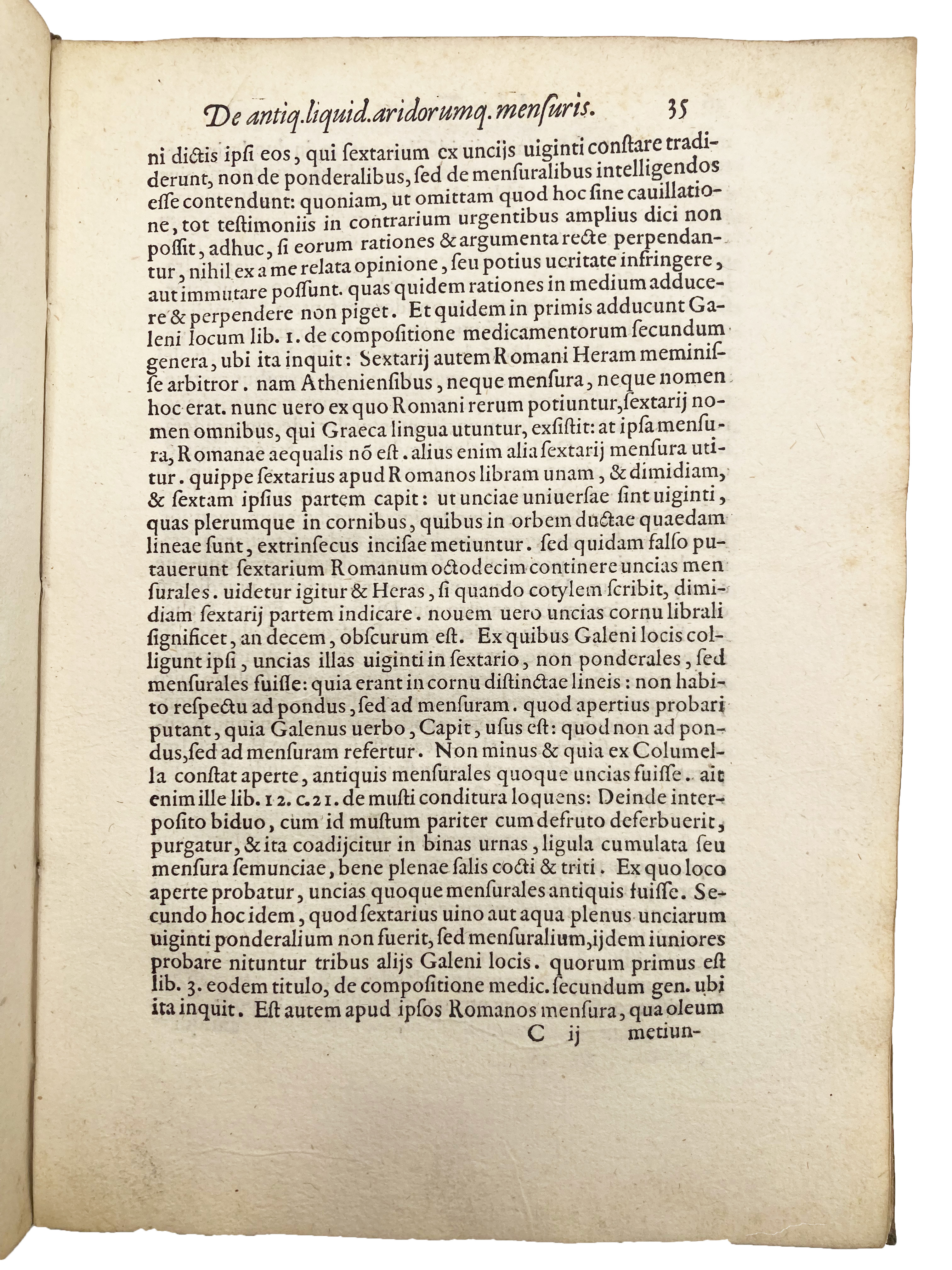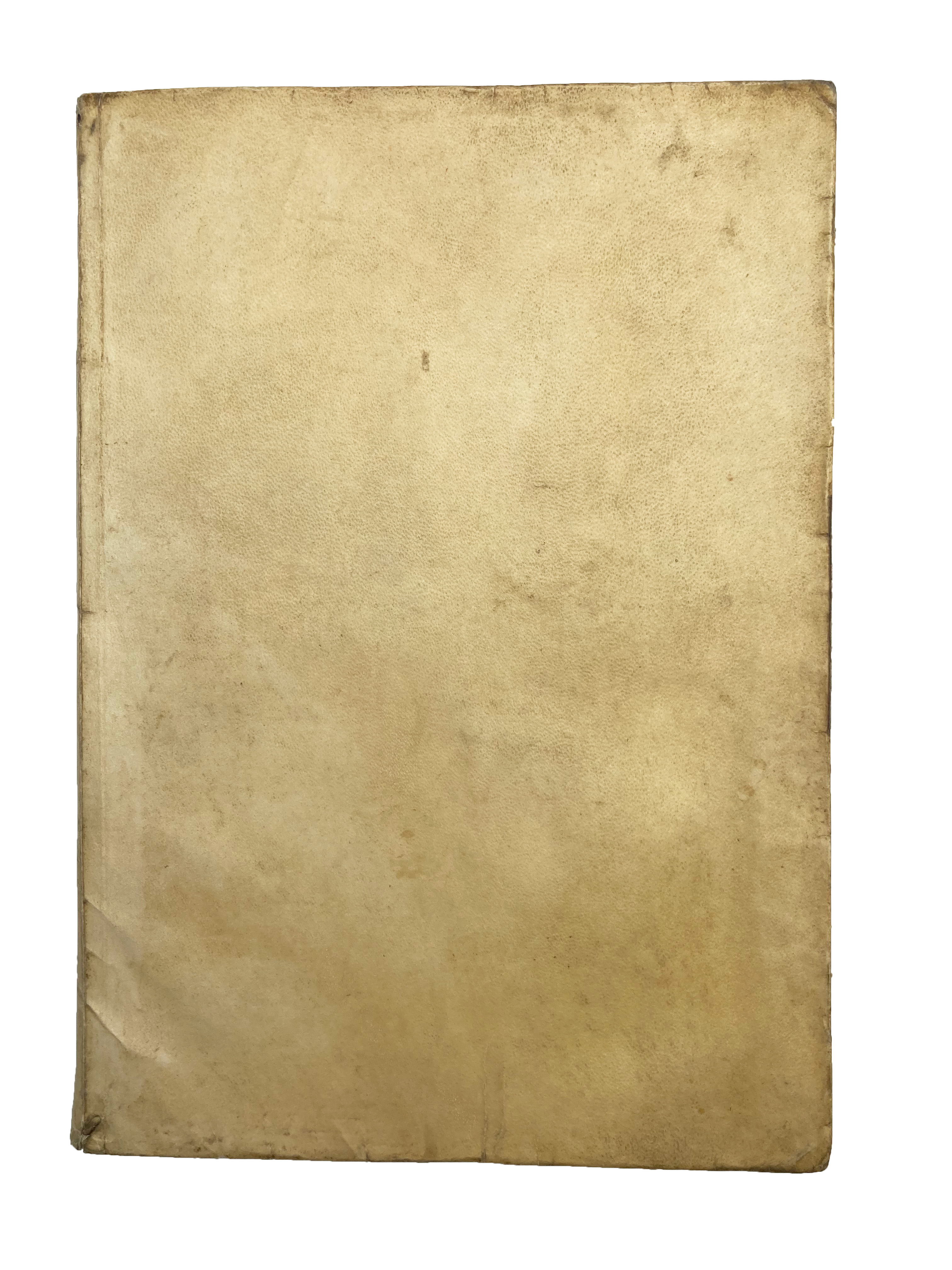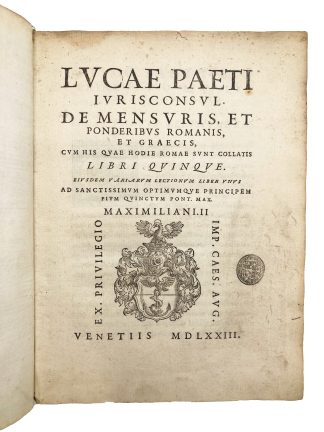PETO, Luca.
MEDICAL ANTIQUARIANISM
De mensuris, et ponderibus Romanis, et Graecis.
Venice, [Aldine Press], 1573£2,950.00
4to. pp. (iv) 127 (ix). Roman letter. Woodcut arms and ancient oval inkstamps to t-p. Two folding bifolia, printed recto and verso, with full-page woodcuts in good strong impressions. Woodcut initials. Contemp. limp vellum. Inkstamp of T. Kimball Brooker to fly, booklabel of A. Garrigues to front pastedown. First quire with light spotting and yellowing, slightly dusty, lightly marginally foxed, a very good, well margined copy.
Second edition of this eclectic and entertaining antiquarian study of Roman and Greek weights and measures, including those still used in Rome at the time, first published in folio in the same year. The woodcuts show amphorae of various sizes, weights and rulers, and two reliefs depicting Roman farmers using amphorae and carrying weights on their wagons with oxen. Peto, who litters his account with literary references to Plautus, Crispian, Martial, Virgil, Tibullus, etc., notes that the ancient Greek system of measures originated with doctors and veterinarians (hippoiatricorum), which he relates to the Roman system used chiefly for liquids such as olive oil, hence the illustrations of amphorae. Peto dedicates a section on the differences between the Romano-Julian and the modern Gregorian calendars to a well-known medical doctor, Alexander Petronius.
Besides his medical interests – Peto was in fact chiefly a lawyer, as he is described in this book – there is a proudly Roman emphasis on Peto’s work: one section relates extracts from Pliny and Virgil’s Georgics to the ‘quality’ of two years, 1569 and 1570, describing the weather and agricultural conditions in Rome; in 1569 there was an abundance of pigs of great fatness, as had not been seen in a decade. Peto describes the modern designations for olive oil, pettitus, medius, folietta and congitella, as well as the local Roman designations, the aridorum: rublus, rublitella, quarta, scortius, semiscortius, quartucius, etc. There is a section on the restoration of the Aqua Virgo aqueduct by Pope Pius IV, which appeared as a separate work in 1570, with reproductions of ancient inscriptions; the dedication is to his successor Pius V. Finally, there follow Quintus Rhemnus Fannius Palaemon’s ‘songs’ on weights and measures, first published in a compendium of medical works in 1528, who is quoted liberally throughout the text.
Ren. 216: 11. Ahmanson-Murphy 861. Kallendorf & Wells 492. EDIT 16 CNCE 27507. USTC 847775. Adams P 26. BM STC It., p. 484. Brunet, IV, 308. Not in Mortimer. Not in Osler, NLM, Wellcome or Heirs of Hippocrates.


